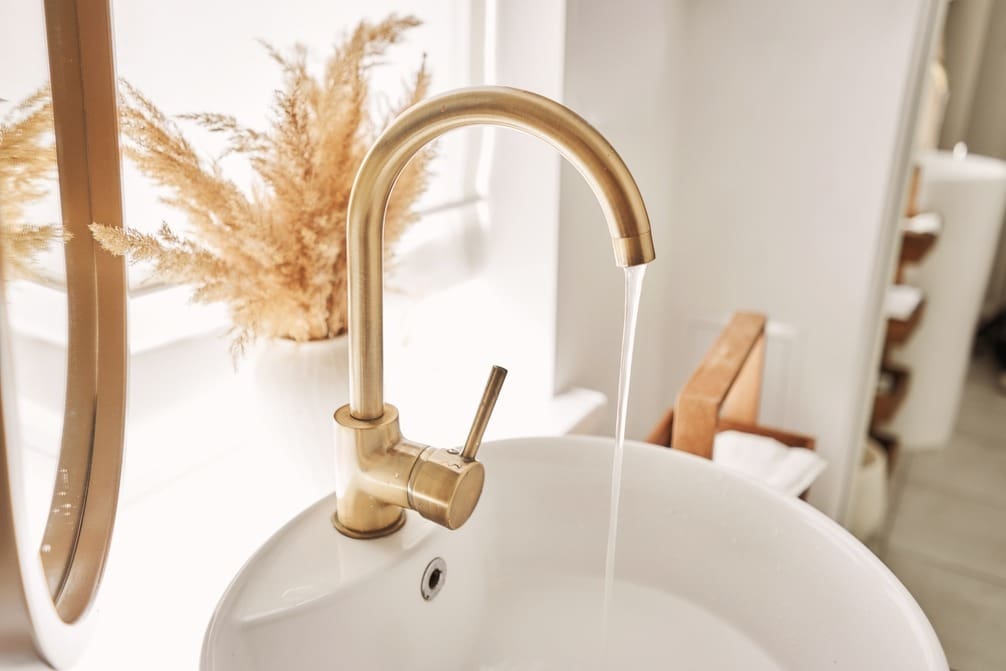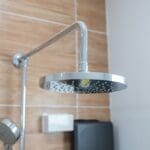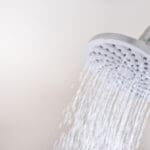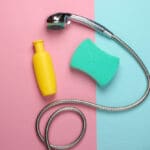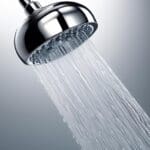A dripping shower head, much like a ticking clock, can be a constant reminder that something in your home demands attention. If you’ve noticed your shower head leaks when the faucet is on, it’s crucial to address this issue promptly to prevent water wastage and potential damage.
As a professional in home maintenance, I’ll guide you through the initial steps to diagnose and fix the problem. Whether it’s inspecting the diverter valve, adjusting water pressure, or replacing worn-out components, these solutions can often be simpler than you might think. However, identifying the root cause is key, and with a few focused efforts, you’ll be on your way to a leak-free shower.
Key Takeaways
- Regular inspection and maintenance can prevent leaks in shower heads.
- Mineral deposits from hard water can cause blockages and leaks.
- Proper diagnosis and troubleshooting can help identify the root cause of leaks.
- Calling a professional plumber may be necessary for complex or persistent leaks.
Before You Begin
Before you begin tackling your shower head leak, it’s crucial to first understand the potential causes and evaluate the best solutions for your situation. A leaking showerhead when the faucet is on can be due to several factors. It could be as simple as a loose connection or as complex as a problem with the internal mechanics of the faucet.
To fix the issue effectively, start by examining the showerhead and faucet for visible signs of wear or damage. Sometimes, mineral deposits from hard water can build up, obstructing the flow of water and causing it to divert and leak. To tackle this, you might need to remove the showerhead to clean or replace it. Remember to cover the drain to prevent any small parts from disappearing down it.
Learning from other users’ experiences can be invaluable. Many have found that replacing worn-out washers or O-rings inside the faucet has stopped the dripping. However, it’s essential to correctly identify the source of the leak before proceeding with any repairs. Misdiagnosis can lead to unnecessary work and continued leaking. Take your time to understand the problem thoroughly, ensuring a successful fix.
Inspecting the Shower Head
Having understood the potential causes of a leaking shower head, it’s now crucial to closely inspect the shower head itself for any signs of damage or blockage. First, carefully remove the shower head by turning it counter-clockwise. This step is pivotal to uncovering the root of the problem. Examine the rubber O-rings and screen for any damage or blockage that could be causing the leak.
After cleaning, ensure to wrap the threads of the shower arm with Teflon tape to prevent future leaks. Reattach the showerhead back, making sure to caulk around the entire base if necessary.
Replacing the Faucet Cartridge
If your shower still leaks after cleaning the head, it’s time to replace the faucet cartridge. First off, you’ll need to shut off the water supply to your shower to avoid a flood. Locate the main water valve and turn it off.
Next, remove the faucet handle. This usually involves unscrewing it or removing a cap to access a screw. With the handle off, you’ll see the faucet valve. Use a wrench to carefully remove the valve. Make note of its orientation; you’ll need to install the new one the same way.
Now, it’s time to replace the shower faucet cartridge. Take the old cartridge to a hardware store to find a matching new one. This ensures compatibility and avoids further issues.
Install the new cartridge by aligning it as the old one was. Tighten it securely but don’t overdo it. Once in place, reattach the faucet handle.
Troubleshooting Tips
Despite replacing the faucet cartridge, you might still encounter leaks, prompting a deeper dive into troubleshooting techniques. Fixing a dripping leaky showerhead involves more than a quick fix; it requires understanding the nuances that affect water flow and pressure. Follow these steps if your showerhead continues to leak even after you’ve done the basics.
- Inspect the rubber washer: Often overlooked, the rubber washer inside the showerhead plays a critical role in preventing water from escaping. A damaged or worn-out washer can be the culprit behind persistent leaks.
- Check for debris inside the showerhead: Mineral deposits and debris can accumulate over time, obstructing the water flow and causing leaks. Disassemble and clean the interior parts thoroughly.
- Ensure proper installation: Sometimes, the issue isn’t with the parts but how they’re fitted together. A misaligned showerhead or improperly screwed components can lead to leaks.
- Run your shower for 60 seconds: After any adjustments or replacements, run your shower for a minute to ensure everything is functioning correctly. This simple test can save you from future headaches.
Addressing these areas can significantly reduce or completely fix a dripping leaky showerhead, restoring peace and conserving water.
When to Call a Plumber
Sometimes, a DIY repair doesn’t cut it, and that’s when you should call a professional plumber. If the task of fixing a leaking showerhead seems too daunting, or if you’re unsure about the repair process, it’s wise to seek out a professional. They’ve got the expertise to handle complex repairs that might look too challenging for you.
Professional plumbers can accurately diagnose the root cause of why your showerhead is leaking when the faucet is on. Whether it’s an issue with the water flow or something looks worn or damaged, they’ll know exactly what needs to be done. Plus, they’ve the right tools for every job, which means you won’t need to use makeshift methods that could potentially worsen the problem.
Make sure to contact a professional if the dripping showerhead continues despite your best efforts. This not only saves you time and effort but also prevents potential damage to your plumbing system. When in need of help, don’t hesitate to reach out to experts like Mr. Rooter Plumbing for assistance with leaking showers and ensure your hot water flow is back to normal without causing your showerhead to leak.
Frequently Asked Questions
Why Is My Shower Head Leaking When I Turn the Faucet On?
Your shower head’s leaking because there’s likely a problem with the faucet valve or a buildup blocking the water flow. It’s crucial to check both the faucet cartridge and the shower head for any blockages.
Why Does Water Come Out of Shower Head When Faucet Is On?
You’re likely dealing with a faulty diverter valve, high water pressure, improper installation, or leaks behind the tub, which causes water to exit the shower head when the faucet is on.
How Do You Tighten a Shower Head so It Doesn’t Leak?
To tighten a shower head and prevent leaks, first, ensure the water’s off. Unscrew the shower head, check for damaged washers or O-rings, replace if necessary, and securely reattach it. Always test afterward.
Why Does My Shower Drip When the Other Shower Is On?
If your shower drips when another is on, it’s likely due to a pressure imbalance or a faulty diverter valve. You’ll need to inspect and possibly replace the valve to stop the leak.

